I’m going to split the blog again this week because there is so much going on. Moreover, I’ll use this one to publicise public events linked to Centre people coming up later in July and advance notice for four such events in the early autumn as ‘save the date’.
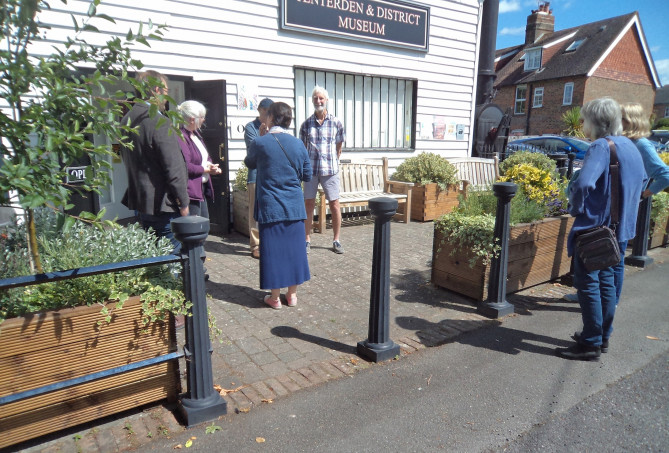
But firstly, because two of the Brook Rural Museum trustees are members of the Centre, the Brook Museum’s ‘Medieval Fayre’ will be on Saturday 13 July between 10am and 3pm which will include a wide range of demonstrations and drop-in activities for all ages, as well as the fabulous medieval barn, early 19th-century oast house and collection of historic agricultural machinery. For more details see https://brookruralmuseum.org.uk
Now to Kieron Hoyle, who will be speaking at Dover Museum on Thursday 18 July at 7.30pm. The title of her talk is ‘The Maison Dieu and Dover’ where she will explore the fascinating and turbulent history of the Maison Dieu in the 16th century, especially the building’s many lives from pilgrim hospital and store house to a victualling yard for the Royal Navy. This free talk can be booked at: https://bookwhen.com/maison-dieu/e/ev-s0ug-20240718193000
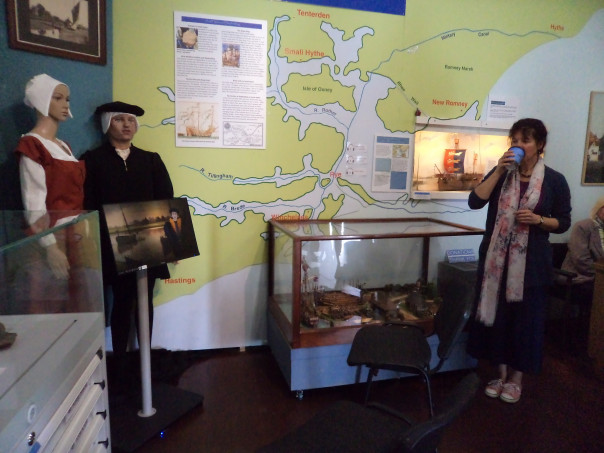
Then moving to September, there is the first of the Canterbury Historical and Archaeological Society talks. For September this is in person at St Paul’s church, Canterbury on Wednesday 11th at 7.05pm where I’ll be exploring ‘Canterbury’s Medieval Churches: Parish and People’, non-CHAS members £3 on the door.
One of the highlights of the CKHH year is the Nightingale Memorial Lecture. This joint annual lecture organised by the Centre and the Brook Rural Museum will be held at Canterbury Christ Church in the Michael Berry Lecture Theatre, Old Sessions House at 7pm on Tuesday 24 September. This will be preceded by a wine reception at 6.30pm and before the lecture we’ll present certificates to those receiving Ian Coulson Postgraduate Awards towards their studies into different aspects of Kent history. This year the Nightingale Lecture will be given by Dr John Bulaitis on the title ‘Book Launch – Tales from the Tithe War’ and the CCCU Bookshop will be present with copies for sale of John’s new book on this fascinating topic. The event is free but there is a retiring collection.
Then the next weekend: Saturday 28th and Sunday 29th September, the CKHH is delighted to be working with the Society of Landscape Studies to hold a weekend at Canterbury under the title ‘Sacred and Profane: the landscapes of Kent’. The conference will take place on the Saturday at St Paul’s church, Canterbury, near the Burgate and among the presenters will be Tim Tatton-Brown, Richard Eales and past and present members of CCCU staff, including among the latter Dr Claire Bartram one of the Centre’s co-directors. The field trip on the Sunday will begin and end in Canterbury and includes guided visits to Dover’s Western Heights and an Anglo-Saxon and medieval landscape at Nonington. More details and booking at: https://www.landscapestudies.com/sls-annual-conference-september-2024/
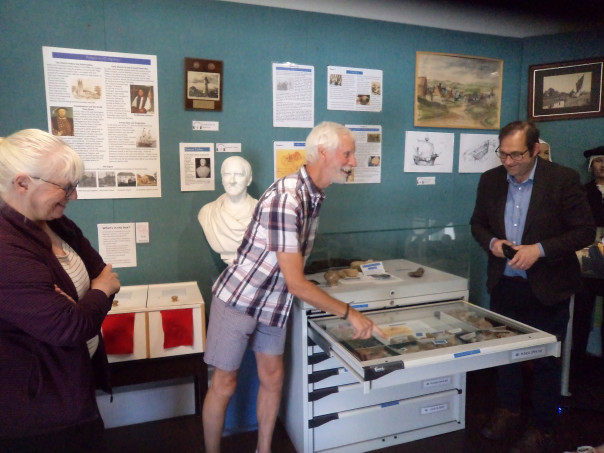
Finally, in this ‘hold the date’ section, please do for the Medway History Showcase which once again will be at the Royal Engineers Museum, Gillingham and this year on Saturday 5 October. As those who have been before will know, numerous regional and local history and heritage organisations have exhibition stalls around the ground floor of the museum and there is a series of interesting talks taking place there during the day, largely organised by Peter Joyce. Among the speakers this year are Jason Mazzocchi from the Centre who is studying early modern Faversham for his doctorate, and Dr Diane Heath with her ‘Medieval Animals Heritage’. Also having a stall there will be Professor Carolyn Oulton and Michelle Crowther with their Kent Maps Online project. For details of this free history and heritage day, please see: https://www.re-museum.co.uk/events/medway-history-showcase-3/
Now coming to events today (Thursday), Drs Claire Bartram and Astrid Stilma attended the final day of the 8th Aphra Behn Europe conference that took place over three days at the University of Kent. Under the conference title of ‘Aphra Behn and her Restoration’, the presentations today included two public lectures. The first was given by Charlotte Cornell, who is studying Behn’s early life for her doctorate at Kent and here she spoke on ‘Rooting Aphra: Behn’s Kentish Beginnings’, then this afternoon Loveday Ingram, a theatre director and adaptor, gave a presentation on ‘Aphra Behn Onstage Now and in the Future’.
This report on the day is by Claire: This was a rich final day of papers in a packed schedule that has also included nightly performances of Aphra Behn’s The Amorous Prince at CCCU. By Thursday morning, the conference was in full swing with lively connections being made back across papers given on previous days, it had clearly been very stimulating event that had attracted extensive enthusiastic scholarly engagement with Behn, her life and oeuvre. As someone interested in print history, life-writing and place, there was much to enjoy from Professor Emma Depledge’s work on the marketing of bound composite play volumes that included Shakespeare and Behn as part of multi-authored collections of controversial plays to Dr Eneas Caro Partridge’s presentation on the surviving plays of the Spanish writer Ana Caro de Mallén. Her success as an accomplished woman writer, able to earn a living from her work, predated Aphra’s similar success by fifty years in a literary culture that was enormously influential on Restoration Theatre. This celebration of women writers was also enlivened by Dr Yvonne Noble’s discussion of an understudied Canterbury poet Mary Randolph, friend of Anne Finch and Elizabeth Elstob whose remarkably varied work was also immortalised in stone on an Oxenden Family memorial and Dr Laura De Furio’s discussion of Helen Hay Johnston, Lady Warriston who like Behn was engaged in ciphered letter -writing, was an accomplished petitioner and custodian of a dangerous family archive.
Questions of Behn’s biography resurfaced again and again across the day and were reprised in Charlotte Cornell’s fascinating reconstruction of Behn’s early years largely through her rather disreputable father Bartholomew Johnson whose shotgun wedding, drinking, disregard for city ordinances, inn-keeping and debt left tangible archival evidence of the family’s early years in and around Canterbury. Dr Rachel Willie’s mythologised Behn highlighted how Behn’s life and reputation as a writer became enmeshed with the 18th-century reception history of Oroonoko. Other papers approached Behn’s life through possible associates such as Hester Scawen, niece of the governor of Barbados in a paper by Associate Professor Juliet Paul and in places associated with Behn’s actual and imagined travels in papers by Professor Roz Ballaster on Behn’s Antwerp and Professor Marion Wynne-Davies on Behn’s London. Professor Helen Wilcox explored a rhetoric of place using contemporary maps to consider the symbolic and metaphoric status of places including Ypres, Naples and Suriman as porous or enclosed or unstably governed backdrops to Behn’s writings. The conference continues today with a visit to Westminster Abbey to lay flowers on Aphra Behn’s grave and concludes on Sunday with a private tour of Vita Sackville-West’s Sissinghurst House and Garden.
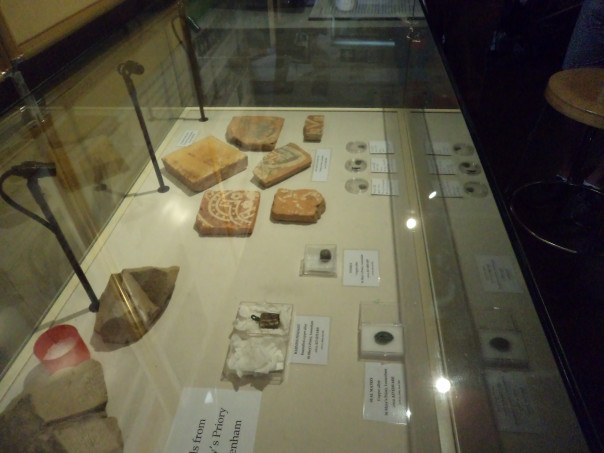
At the same time, the Lossenham Project wills group were meeting in Tenterden. Among this group are three members of the Kent History Postgraduates and me, but on this occasion due to various circumstances, only Jason and I were able to be at the group’s in person meeting. We were at Tenterden and District Museum rather than Lossenham to see the museum and the special exhibition to which the group has contributed. This exhibition has been organised by Sue Hatt, a wills group member and volunteer at the museum, who met the group at the door and gave us some background information about the place before we were joined by Robin the museum’s curator. The museum’s special exhibition this year is called ‘Reaching Across Time: Tenterden and District 1400 to 1600’ as a way to explore the similarities rather than focus on the differences between life then and now under the themes of transport, industry, education, shipbuilding, medicine, religion, the culture of the time and the role of the elite gentry families.
Going through the front entrance into the first room, we were immediately confronted by a large map on the back wall that gives a clear picture of the size and scope of the River Rother during the late medieval period and that it could be navigated up river from Rye around the Isle of Oxney to the creek at Small Hythe, and therefore Tenterden, by way of Reading Street and Ebony. This theme of the role of the Rother through riverine and maritime activities is highlighted through the great models on shipbuilding and the examples of archaeological finds, the latter partly displayed in a series of drawers that the visitor can explore for themselves. Additionally, the visitor can meet ‘Robert Brekynden’ and his wife by hearing about their lives through the two talking heads, their stories created from information gleaned from probate evidence, royal documents and other primary sources which Keith, another group member had supplied to Sue.
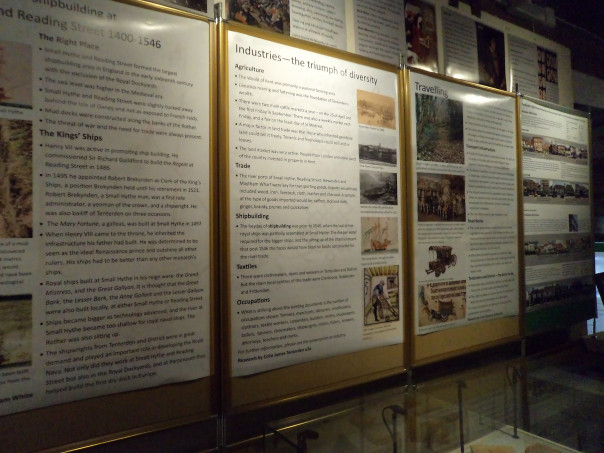
We then worked our way through the ground floor of the museum, both Robin and Sue supplying a considerable amount of information not only about the wealth of the museum’s varied and well-arranged exhibits, but also how and why the artefacts have been displayed in this way to tell stories and seek to engage visitors of all ages. For example, they discussed the display produced by the local schoolchildren in 1974 of life through the ages in Tenterden and how now 50 years on the local school will be producing an additional panel to bring the story up to date. We also visited the 1960s/70s living room and kitchen, that is a type of space older visitors are likely to remember from childhood, and which can be used to demonstrate major changes, yet in other ways similarities over what is in many ways just one or at most two generations.
Going upstairs, we came to the special exhibition room that has the bulk of the themed exhibition boards which were researched by members of the local U3A and supplemented by evidence from the probate records the wills group members have been transcribing from the parishes of this area in the Rother Levels and southern Weald. These boards, too, use named people wherever possible to illustrate ideas, for example, about the roles of women in the household, workshop and on the land. Furthermore, because Sue had far more information than there was space to put up as exhibition boards, there is an interactive computer where the visitor can delve deeper and wider by calling up much more information. Additionally, there are on display archaeological finds from the excavation at the Carmelite friary at Lossenham, led by Isle Heritage, as well as another set of drawers with a whole range of objects including modern blackwork, to give a feel for that produced in Elizabeth I’s time, which was created by Robin’s wife amongst others.
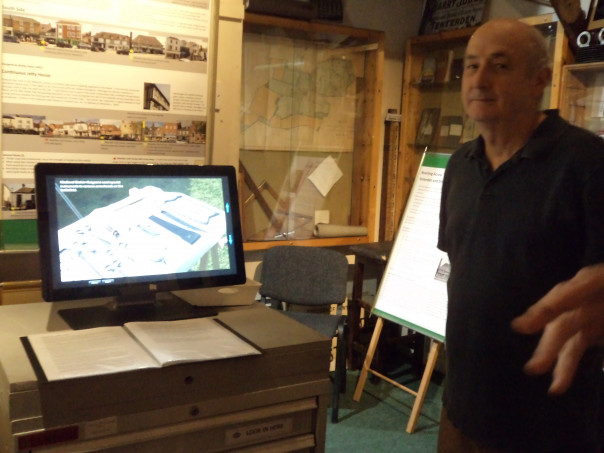
Therefore, as Robin said, and this was similarly one of Sue’s aims, the exhibition is attractive not solely to people who are interested in reading and seeing attractive illustrations, but to others who prefer to engage through hearing and touch. For example, the talking heads idea is again used to bring alive ideas about Tenterden’s social structure through the protagonists telling the story from their perspective about a dispute between the Tenterden vicar and a local gentlewoman over access to a specific part of the parish church – who should have a key.
After this fascinating tour, and this is barely scratching the surface, the group thanked Robin heartily and headed off for a working lunch to discuss what they had seen and heard, and to consider with Sue ideas about what might be good themes for future special exhibitions, how to engage with audiences of different ages, how to enhance footfall at this volunteer-run museum, and how to attract more local interest through events such as workshops. While there was a complete understanding that looking at modern (20th-century topics) might be a good route next time (also other periods), there was a feeling that the richness of the probate sources, as well as Tenterden sources such as the town’s custumal still have much more potential as ways of engaging people’s interest in their history and heritage. Consequently, the group hopes to continue to work with Sue and the museum and all felt that they would like to visit the museum again and would be happy to tell others about this gem in Tenterden. So many thanks to Sue and Robin and hopefully the museum and exhibition will get plenty more visitors over the summer.
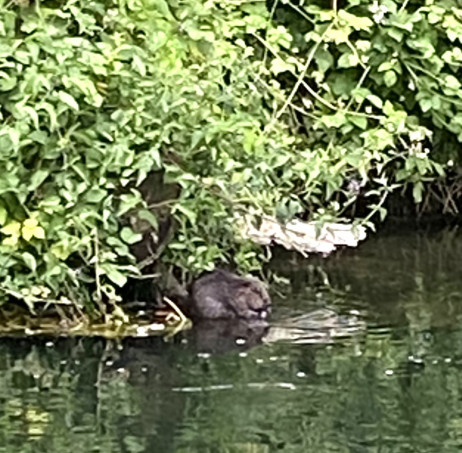
As a final, but very different angle, I thought that it would only be fair to mention that a small group of historians last weekend were delighted to see the Canterbury beavers, thereby highlighting the multidisciplinary nature of the Kent History Postgraduates group’s activities.
 Centre for Kent History and Heritage
Centre for Kent History and Heritage Sheila Sweetinburgh
Sheila Sweetinburgh 1505
1505

